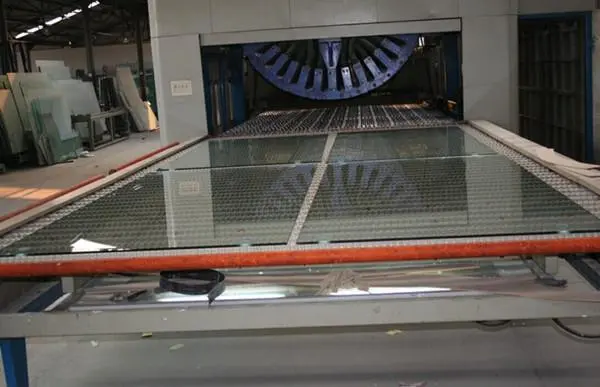Inleiding: De tijdloze schoonheid van glasblazen
Glasblazen is een eeuwenoude kunstvorm die al duizenden jaren tot de verbeelding spreekt van zowel ambachtslieden als bewonderaars. Dit ingewikkelde ambacht bestaat uit het transformeren van gesmolten glas in delicate en prachtige objecten door middel van vaardige manipulatie, warmte en lucht. In dit artikel verkennen we de geschiedenis van glasblazen, de fascinerende technieken en hoe het zich heeft ontwikkeld tot een moderne kunstvorm die over de hele wereld wordt beoefend.

Historische wortels
De oorsprong van het glasblazen gaat terug tot ongeveer 3500 voor Christus, waarbij vroege beschavingen zoals de Egyptenaren en de Mesopotamiërs tot de eersten behoorden die het ambacht onder de knie kregen. Deze oude ambachtslieden maakten glazen vaten die zowel functioneel als decoratief waren en legden daarmee de basis voor de kunst van het glasblazen. Na verloop van tijd verspreidde dit ambacht zich over culturen en regio's en ontwikkelde het zich van een praktische techniek tot een zeer gerespecteerde kunstvorm.
Het proces van glasblazen
Het proces van glasblazen begint met het smelten van ruw glas in een oven bij temperaturen tot 2.300 graden Fahrenheit (1.260 graden Celsius). Zodra het glas gesmolten is, wordt het voorzichtig op het uiteinde van een holle blaaspijp geplaatst. De glasblazer blaast dan in de pijp, waardoor het gesmolten glas uitzet en een holle vorm krijgt. Deze eerste stap is slechts het begin van een complex en delicaat proces.
Freeblowing en verder: De kunst meester worden
Een van de belangrijkste technieken bij het glasblazen is "freeblowing", waarbij de glasblazer het gesmolten glas blijft vormen door warmte en lucht toe te passen. Deze techniek vereist nauwkeurige controle, omdat het glas op een bepaalde temperatuur moet worden gehouden om te voorkomen dat het breekt of te moeilijk te hanteren wordt. Naast freeblowing gebruiken moderne glaskunstenaars andere technieken zoals "trekken", "puffen" en "slumping" om ingewikkelde patronen en ontwerpen te maken, die hun creativiteit en meesterschap in het vak tonen.
De rol van glasfabricage: Traditie ontmoet innovatie
De kunst van het glasblazen is niet alleen een gekoesterd ambacht gebleven, maar is ook een hoeksteen geworden van de moderne glasproductie. Veel bedrijven zijn gespecialiseerd in de productie van hoogwaardig glaswerk voor zowel commercieel als residentieel gebruik. Deze fabrikanten hebben bekwame ambachtslieden in dienst die traditionele blaastechnieken combineren met moderne technologie, wat resulteert in een reeks producten variërend van vazen en schalen tot decoratieve kunstwerken en verlichtingsarmaturen.
Conclusie
De kunst van het glasblazen is een bewijs van menselijke creativiteit en vakmanschap. Van de oorsprong in oude beschavingen tot de plaats die glasblazen inneemt in de moderne productie, het blijft inspireren en boeien. De evolutie van dit ambacht, gekenmerkt door zowel traditie als innovatie, zorgt ervoor dat glasblazen een levendige en dynamische kunstvorm blijft. Vandaag de dag verleggen ambachtslieden de grenzen van wat mogelijk is en worden de schoonheid en complexiteit van glasblazen meer gewaardeerd dan ooit.
Samenvatting FAQ
V: Waar is glasblazen ontstaan?
A: Glasblazen ontstond rond 3500 v. Chr. in oude beschavingen zoals Egypte en Mesopotamië, waar het werd gebruikt om functionele en decoratieve glazen vaten te maken.
V: Wat is het basisproces van glasblazen?
A: Het basisproces bestaat uit het smelten van ruw glas in een oven, het verzamelen ervan op een blaaspijp en dan blazen in de pijp om het gesmolten glas in een holle vorm te blazen. Deze vorm wordt verder verfijnd met technieken als freeblowing.
V: Wat zijn enkele moderne technieken die gebruikt worden bij het glasblazen?
A: Naast freeblowing gebruiken moderne glaskunstenaars technieken als trekken, puffen en slumping om ingewikkelde ontwerpen en vormen in glaswerk te creëren.
V: Hoe heeft glasblazen de moderne glasproductie beïnvloed?
A: Glasblazen heeft een grote invloed gehad op de moderne glasproductie, waar bekwame ambachtslieden een combinatie van traditionele technieken en moderne technologie gebruiken om glaswerk van hoge kwaliteit te maken voor verschillende toepassingen.
